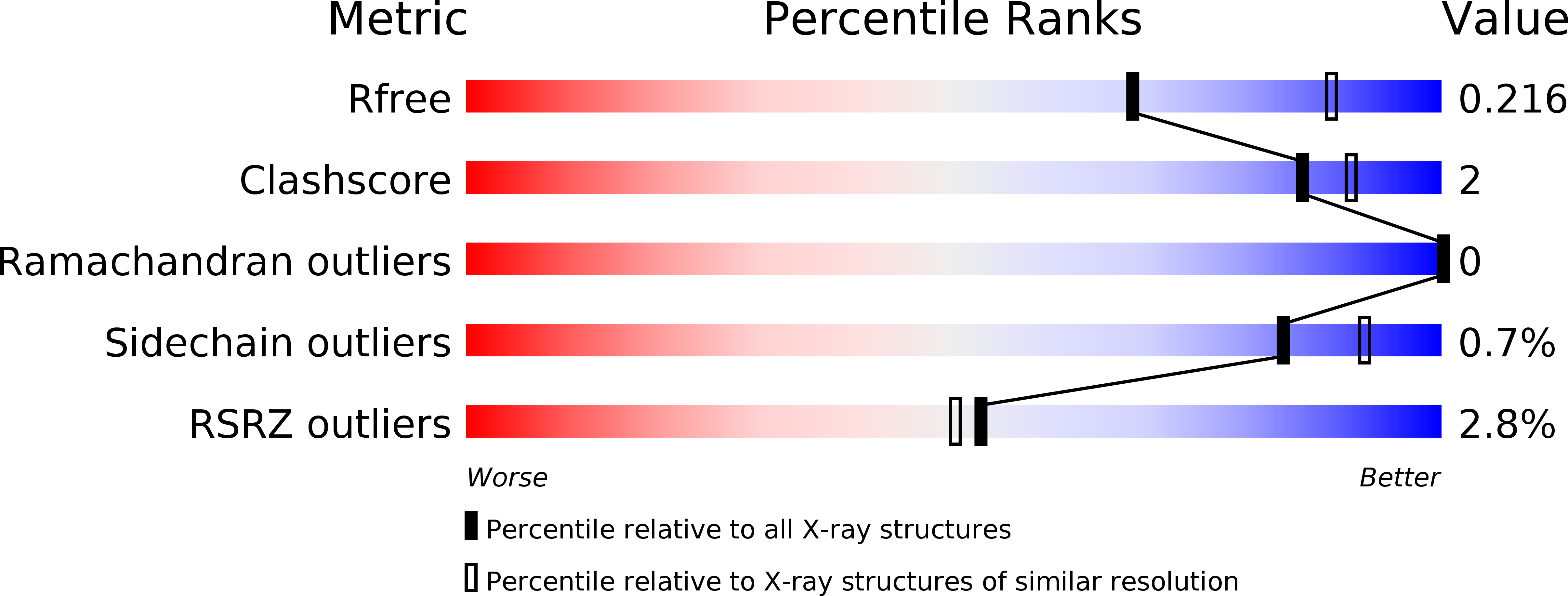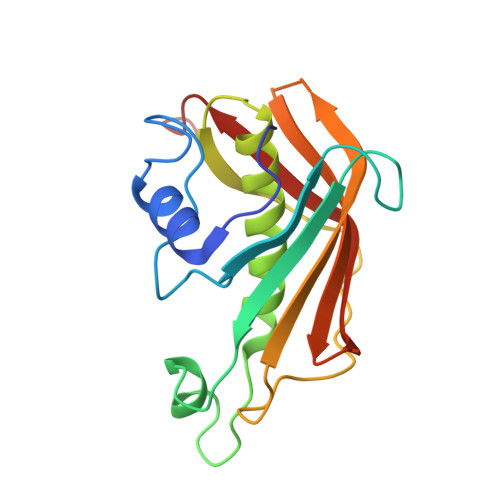A Substrate Mimic Allows High Throughput Assay of the Faba Protein and Consequently the Identification of a Novel Inhibitor of Pseudomonas Aeruginosa Faba.
Moynie, L., Hope, A.G., Finzel, K., Schmidberger, J., Leckie, S.M., Schneider, G., Burkart, M.D., Smith, A.D., Gray, D.W., Naismith, J.H.(2016) J Mol Biol 428: 108-120
- PubMed: 26562505
- DOI: https://doi.org/10.1016/j.jmb.2015.10.027
- Primary Citation of Related Structures:
4CL6 - PubMed Abstract:
Eukaryotes and prokaryotes possess fatty acid synthase (FAS) biosynthetic pathways that comprise iterative chain elongation, reduction, and dehydration reactions. The bacterial FASII pathway differs significantly from human FAS pathways and is a long-standing target for antibiotic development against Gram-negative bacteria due to differences from the human FAS, and several existing antibacterial agents are known to inhibit FASII enzymes. N-Acetylcysteamine (NAC) fatty acid thioesters have been used as mimics of the natural acyl carrier protein pathway intermediates to assay FASII enzymes, and we now report an assay of FabV from Pseudomonas aeruginosa using (E)-2-decenoyl-NAC. In addition, we have converted an existing UV absorbance assay for FabA, the bifunctional dehydration/epimerization enzyme and key target in the FASII pathway, into a high-throughput enzyme coupled fluorescence assay that has been employed to screen a library of diverse small molecules. With this approach, N-(4-chlorobenzyl)-3-(2-furyl)-1H-1,2,4-triazol-5-amine (N42FTA) was found to competitively inhibit (pIC50=5.7±0.2) the processing of 3-hydroxydecanoyl-NAC by P. aeruginosa FabA. N42FTA was shown to be potent in blocking crosslinking of Escherichia coli acyl carrier protein and FabA, a direct mimic of the biological process. The co-complex structure of N42FTA with P. aeruginosa FabA protein rationalises affinity and suggests future design opportunities. Employing NAC fatty acid mimics to develop further high-throughput assays for individual enzymes in the FASII pathway should aid in the discovery of new antimicrobials.
Organizational Affiliation:
Biomedical Sciences Research Complex and EaStCHEM, School of Chemistry, University of St. Andrews, North Haugh, St. Andrews, Fife KY16 9ST, United Kingdom. Electronic address: lm108@st-andrews.ac.uk.















